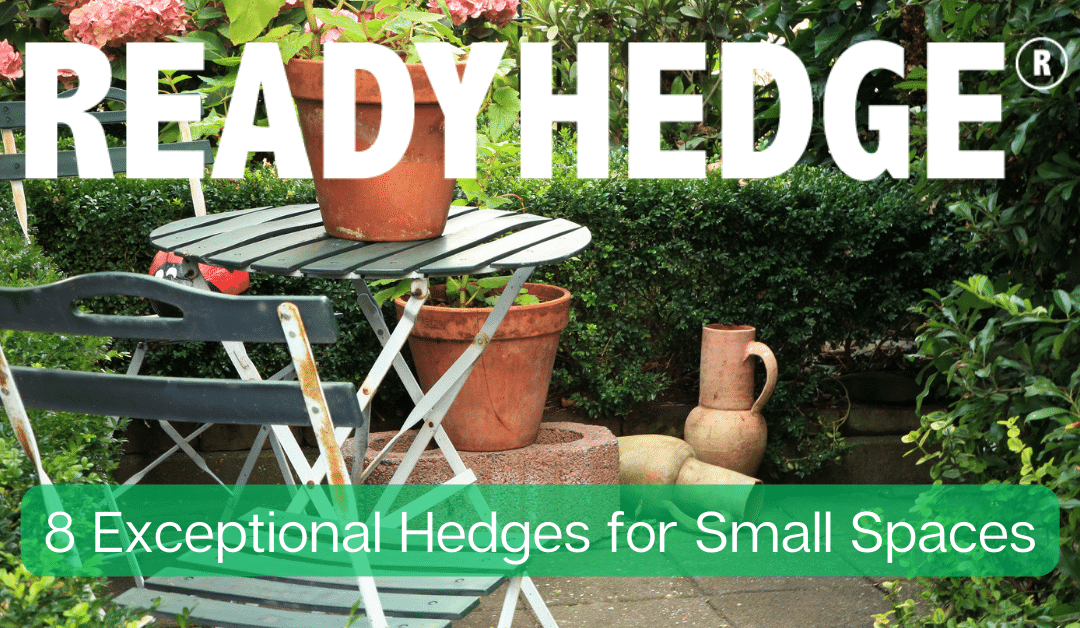
by Matthew Kemble | Jul 24, 2023 | News
Understanding the Importance of Hedges in Small Spaces
Hedges are a fantastic way to add structure, privacy, and beauty to your garden. But when you’re working with a small space, choosing the right hedge becomes even more critical. The best narrow hedge plants in the UK are those that can thrive in limited space, provide the aesthetics you desire, and require a level of care that you’re comfortable with. In this post, we’ll explore the top 10 hedging plants that are perfect for small spaces.
Top 8 Hedges for Small Spaces
-
- Common Box (Buxus sempervirens): Box is a classic choice for hedges, known for its dense, compact growth and small, glossy leaves. It’s an evergreen, providing year-round privacy and greenery. Hardy and adaptable, boxwood can be pruned into a variety of shapes and sizes, making it a versatile choice for any garden. It’s also resistant to most pests and diseases. Boxwood is perfect for formal gardens or creating defined spaces.

- Privet (Ligustrum): Privet is a fast-growing hedge, ideal for those who want to create privacy quickly. It’s semi-evergreen, retaining its leaves in all but the harshest winters. Privet produces clusters of fragrant white flowers in the summer, followed by black berries, providing seasonal interest and attracting wildlife. It’s also tolerant of urban pollution and a variety of soil conditions, making it a practical choice for city gardens.
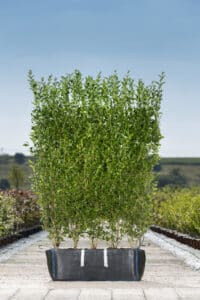
- Holly (Ilex): Holly is a great choice for adding colour to your garden. Its glossy green leaves and bright red berries provide a beautiful contrast and a festive touch in the winter. Holly is evergreen, providing year-round privacy. It’s also very hardy, resistant to pests and diseases, and can tolerate a variety of soil conditions. Holly hedges can also serve as a protective barrier due to their prickly leaves.
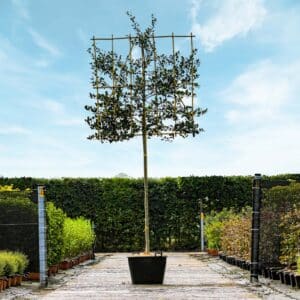
- Yew (Taxus baccata): Yew is a slow-growing, long-lived hedge that’s perfect for formal gardens. It’s an evergreen with dark green needles and red berries, providing year-round interest. Yew can be pruned into a variety of shapes and sizes, and it’s tolerant of shade, making it a versatile choice. It’s also resistant to most pests and diseases. However, note that all parts of the yew are toxic if ingested.
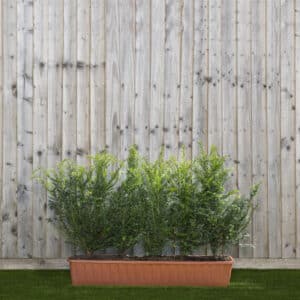
- Beech (Fagus sylvatica): Despite their potential for large growth, Beech hedges can be a wonderful addition to smaller spaces when properly maintained. Their hardiness and adaptability to a variety of soil types make them an excellent choice for urban gardens with diverse soil conditions. The leaves, which turn a captivating golden brown in the autumn and often remain on the hedge throughout the winter, provide year-round privacy even in compact spaces.This feature can be particularly beneficial in smaller gardens where privacy might be a concern. Furthermore, their resistance to most pests and diseases makes them a low-maintenance option, ideal for small-space gardeners who need to maximise their time and resources. With regular pruning to control their size, Beech hedges can offer a blend of beauty, privacy, and resilience in any small garden.
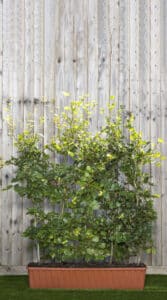
- Hornbeam (Carpinus betulus): Hornbeam is similar to beech but is better suited to wetter soils. It’s an excellent choice for creating a tall, dense hedge. Hornbeam’s leaves turn a beautiful golden yellow in the autumn, providing seasonal interest. It’s also very hardy and resistant to most pests and diseases. Hornbeam can tolerate a variety of conditions, including urban pollution, making it a practical choice for city gardens.
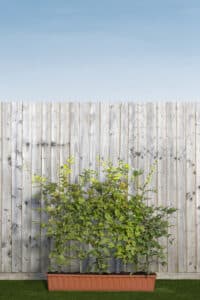
- Laurel (Prunus lus. Angustifolia): Laurel is a large, evergreen shrub, perfect for creating a dense, tall hedge. Its glossy green leaves and clusters of fragrant white flowers provide year-round interest. Laurel is very hardy and can tolerate a variety of soil conditions, including heavy clay. It’s also resistant to most pests and diseases. Laurel can grow quite large, so it’s best suited to larger gardens.

- Hawthorn (Crataegus monogyna): Hawthorn is a native British hedge that’s perfect for attracting wildlife. Its beautiful white flowers bloom in the spring, followed by red berries in the autumn, providing seasonal interest. Hawthorn is very hardy and can tolerate a variety of soil conditions. It’s also resistant to most pests and diseases. Hawthorn hedges can serve as a protective barrier due to their thorny branches.
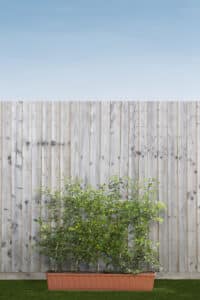
Remember, the best hedge for your garden depends on your specific needs and conditions. Consider factors like the amount of sunlight your garden gets, the type of soil you have, and how much maintenance you’re willing to do when choosing a hedge.
Caring for Your Small Hedge Plants
Watering: All plants need water to survive, and hedges are no exception. While the exact watering needs will depend on the type of hedge and your local climate, most hedges need regular watering, especially during dry periods. Newly planted hedges need to be watered more frequently, usually once a day, to help them establish their root systems. Once established, hedges typically need watering once a week during dry weather. It’s best to water deeply and infrequently, rather than little and often, to encourage the roots to grow deep into the soil. This makes the hedge more drought-resistant and stable.
Pruning: Pruning is essential for maintaining the shape of your hedge and promoting dense growth. The best time to prune depends on the type of hedge. Evergreen hedges, like boxwood and yew, are best pruned in late spring to early summer. Deciduous hedges, like beech and hornbeam, can be pruned in late summer. When pruning, make sure to cut the hedge so that it’s wider at the base than at the top. This shape allows sunlight to reach the lower branches and prevents the base of the hedge from becoming bare. Remember to use sharp, clean pruning tools to make clean cuts and prevent the spread of diseases.
Feeding: Hedges, like all plants, need nutrients to grow. Most hedges will benefit from an annual application of a balanced, slow-release fertilizer in the spring. This provides the nutrients they need for healthy growth. Some hedges, like boxwood and yew, may also benefit from additional feeding in the fall.
Mulching: Mulching is a great way to conserve soil moisture, suppress weeds, and improve soil fertility. Apply a layer of organic mulch, like compost or well-rotted manure, around the base of your hedge in the spring. This will help retain moisture in the soil during the summer and provide nutrients as it breaks down.
Specific Care Requirements: Some hedges may have specific care requirements. For example, rose hedges need regular feeding with a rose-specific fertilizer and protection from pests like aphids and black spots. Holly hedges prefer acidic soil and may need an ericaceous fertilizer if your soil is alkaline. Always do some research or consult with a gardening expert to understand the specific needs of your chosen hedge.
Remember, a well-cared-for hedge not only looks beautiful but also provides a habitat for wildlife, a windbreak, and privacy. With the right care, your hedge can become a highlight of your garden.
Conclusion: Transform Your Small Space with the Perfect Hedge
Choosing the right hedges for small spaces can make a big difference in the look and feel of your garden. Whether you want to create privacy, add visual interest, or define different areas in your garden, a hedge plant can meet your needs. Remember, the best small hedge plants are those that match your garden conditions and personal preferences. So, don’t be afraid to choose a plant that you love. After all, your garden is an extension of your home, and it should reflect your style.

by Matthew Kemble | Jul 10, 2023 | News
Summertime brings with it the joy of sunny days, blooming flowers, and lush greenery. As we cherish the beauty of our gardens, we must not overlook the importance of watering our hedges. A well-maintained hedge not only enhances the aesthetics of our outdoor spaces but also provides essential habitat and shelter for wildlife. However, knowing how often to water hedges in the summer can be a bit of a puzzle, as various factors come into play. In this article, we will delve into the nuances of watering and answer the question: How often to water hedges in summer? We will consider factors like root systems, soil types, irrigation methods, and the specific needs of newly planted hedges to provide you with valuable insights and practical tips for maintaining healthy and thriving hedges during the summer months.
How Often to Water Hedges in Summer?
During the summer, hedges generally require watering once or twice a week. However, the watering frequency may vary depending on factors such as the type of hedge, soil type, and weather conditions. Established hedges with deep root systems can tolerate dry spells better and may need less frequent watering. On the other hand, newly planted hedges require more frequent watering to help them establish their roots. It’s essential to monitor the moisture level of the soil and water when it feels dry about an inch below the surface. Remember to water deeply, ensuring that the water reaches the root zone. Proper watering will keep your hedges healthy and thriving throughout the summer season.
Understanding the Root Systems of Hedges
It is crucial to understand the root systems of hedges. Unlike grass, which has shallow roots, hedges, which consist of trees and shrubs, have more extensive root systems. These deep root systems play a pivotal role in water absorption and overall plant health. As such, they are better equipped to tolerate dry spells, making them a popular choice for gardens.
The Significance of Adequate Watering
Proper watering is the lifeline of any garden, and it becomes even more critical during the scorching summer months. Hedges rely heavily on consistent hydration to maintain their lush appearance and health. Neglecting their water needs can lead to stress, wilting, and even death of the plants. Understanding how often to water hedges is the first step toward a vibrant and thriving outdoor space.
Evaluating Your Soil Type
One of the fundamental aspects of watering hedges is knowing your soil type. Soil can be broadly classified into clay soil, sandy soil, and loamy soil. Each type has distinct water retention properties. Clay soil, for instance, tends to hold water for longer periods, while sandy soil drains quickly, often leading to dry conditions. Loamy soil is considered ideal since it strikes a balance between water retention and drainage.
Assessing Soil Moisture
To determine when your hedges need watering, you must monitor the moisture level of the soil. Stick your finger about an inch into the ground near the hedge’s root zone. If the soil feels dry at this depth, it’s a clear indication that your hedges require watering. Conversely, if the soil feels moist, it’s best to hold off on watering for a little while.
Watering Frequency for Different Hedge Types
The watering frequency for your hedges can vary depending on the type of hedge you have. Established hedges with well-developed root systems typically require less frequent watering, as their roots can access deeper water sources. On the other hand, newly planted hedges have yet to establish their root systems, demanding more frequent watering.
Watering Techniques: The Do’s and Don’ts
There are various methods to water hedges, but some are more effective than others. Let’s explore two popular techniques:
Traditional Irrigation System
Conventional irrigation systems, such as sprinklers, can be efficient for watering hedges, but they may not be the most water-conscious option. The water may not always reach the root zone effectively, and some areas might get overwatered, leading to wastage.
Drip Irrigation
Drip irrigation, a more precise and water-efficient method, involves slow and steady water delivery directly to the root zones. This technique reduces water loss through evaporation and ensures that water reaches the roots where it is needed the most.
Specific Tips for Watering in Different Soils
For perfect watering technique , you need to understand the type of soil because watering varies for different soil types. So let’s explore more.
Clay soil tends to hold water for extended periods, making it prone to waterlogging. To avoid waterlogging and ensure adequate oxygenation for the roots, water clay soil hedges deeply but infrequently. This allows the water to penetrate and reach the roots without saturating the soil.
Sandy Soil
Sandy soil drains quickly, causing water to pass through rapidly, often leaving the root zone dry. To combat this, water sandy soil hedges more frequently but with smaller amounts of water. This allows the soil to retain moisture better and ensures the roots have a constant supply.
Loamy Soil
Loamy soil strikes a balance between clay and sandy soil, making it ideal for hedges. Water loamy soil hedges thoroughly, ensuring the water penetrates deeply to reach the root zone. This promotes healthy root growth and overall plant vitality.
Caring for Newly Planted Hedges
Newly planted hedges require extra attention to establish their root systems successfully. Water them more frequently than established hedges to provide consistent moisture. However, avoid excessive watering, as it can lead to rot or shallow root development. Gradually reduce the frequency of watering as the hedge’s roots begin to establish and reach deeper into the soil.
Conclusion
Watering your hedges in the summer is a balancing act that requires careful consideration of factors such as root systems, soil type, and irrigation methods. By understanding the specific needs of your hedges and adopting appropriate watering techniques, you can ensure their longevity and vitality. Remember to monitor the moisture levels of your soil, adjust watering frequency accordingly, and choose irrigation methods that promote efficient water usage. By nurturing your hedges with adequate water, you’ll be rewarded with vibrant, healthy greenery that transforms your outdoor spaces into inviting havens of natural beauty.
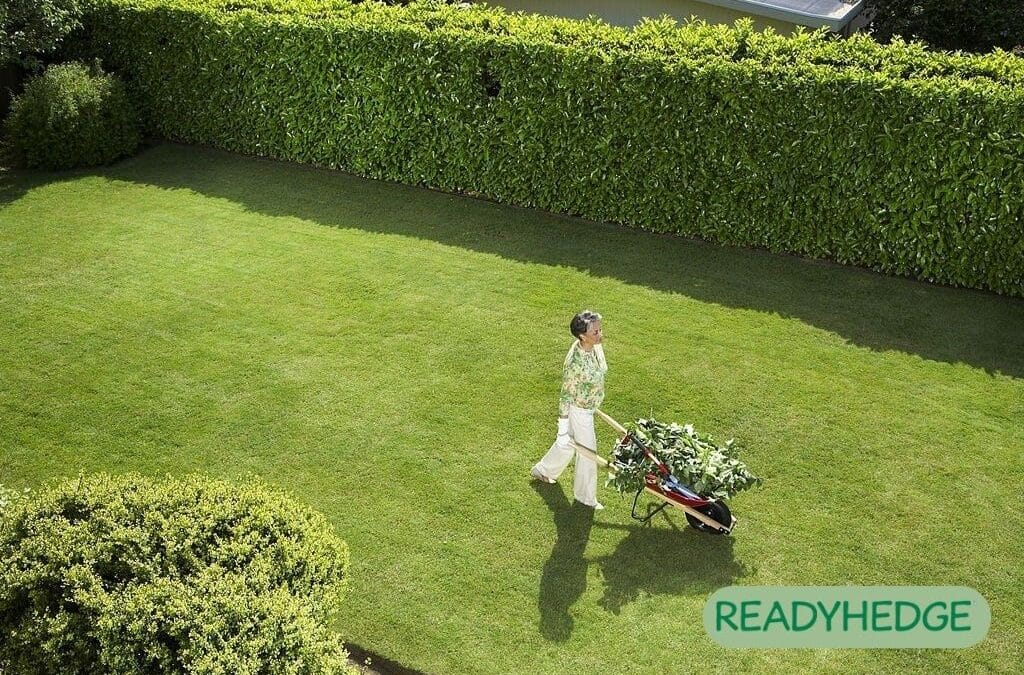
by Matthew Kemble | Jun 13, 2023 | News
Looking for some creative solutions to spruce up your yard? Garden hedges are a great way to add color, texture, and height to your outdoor space. With the right ideas for garden hedges, you can make your backyard the envy of all your neighbors! From evergreen foundation plantings to colorful flowering shrubs, there are many great ideas out there for creating amazing garden hedges. In this blog post, we will explore some of those options and provide you with the tips and tricks you need for success. So if you’re ready to get creative with garden hedges- let’s get started!
15 Ideas for Garden Hedge – Get Creative, Enjoy Desired Outlook
Gardens are always something personal that everybody wants to make it more beautiful and most of them take care of it as their child. So, if a garden is your peaceful place and you want to make it more and more beautiful with the help of its hedge, then as a garden hedge I am here for your help. I am giving you 15 creative and unique ideas for garden hedge.
1. Nurture a Low-maintenance Hedge with Evergreen Shrubs like Boxwood or Yew
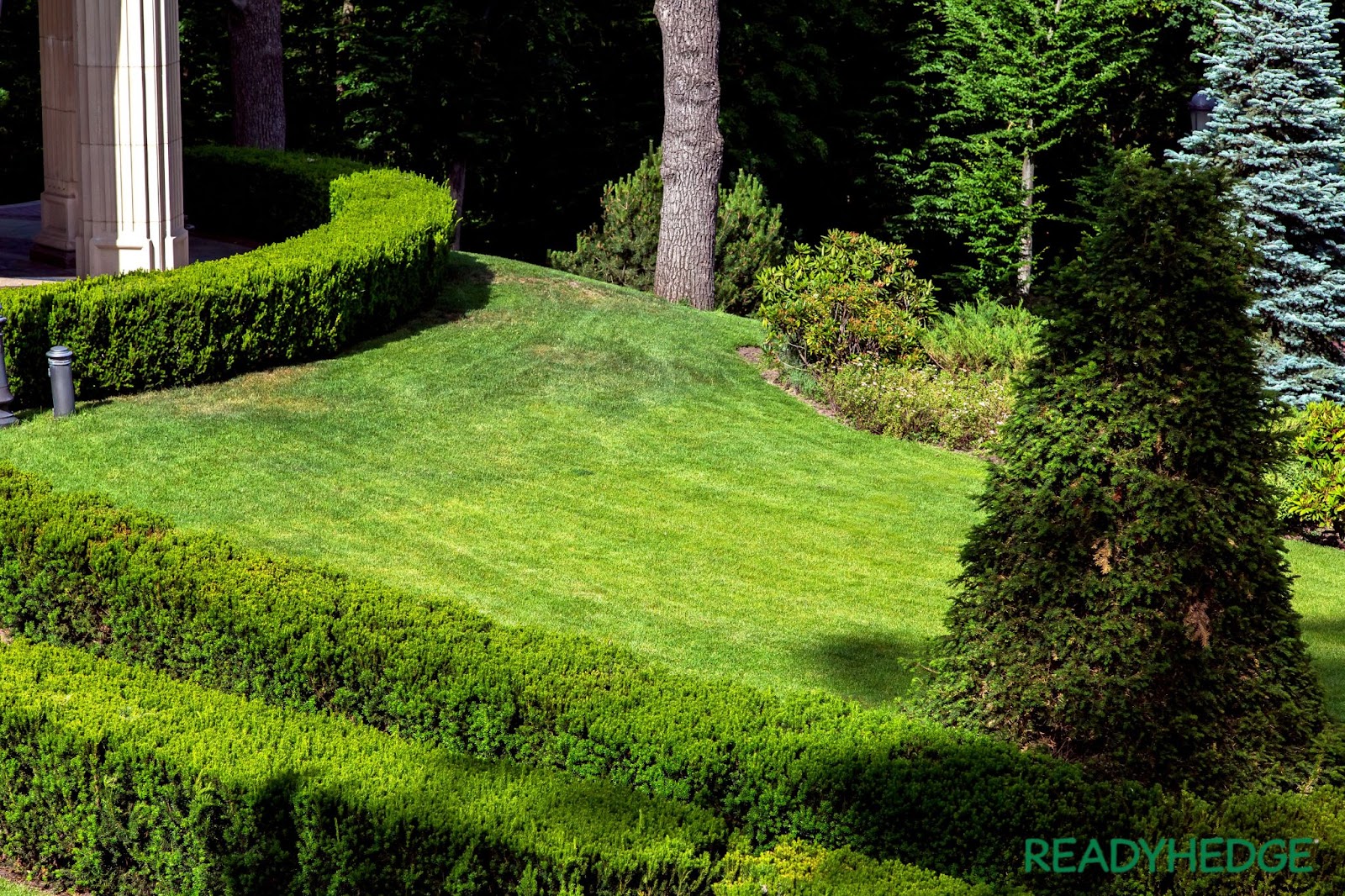
Evergreen shrubs like boxwood and yew are great choices for hedges because they require minimal maintenance. These plants stay green year-round, so you don’t have to worry about constantly pruning them or replacing dead branches with new ones. Boxwood is an ideal choice if you are looking for a low-maintenance hedge. It can be trimmed into various shapes and sizes, plus it is very tolerant of cold temperatures. On the other hand, yew hedges provide an elegant look with its pointed foliage and dark green color that will not fade in winter. Both boxwood and yew can require up to three years for full growth, so patience is key when establishing these plants as hedges.
2. Plant Flowering Hedges to Attract Bright Vibrant Colors to Your Garden
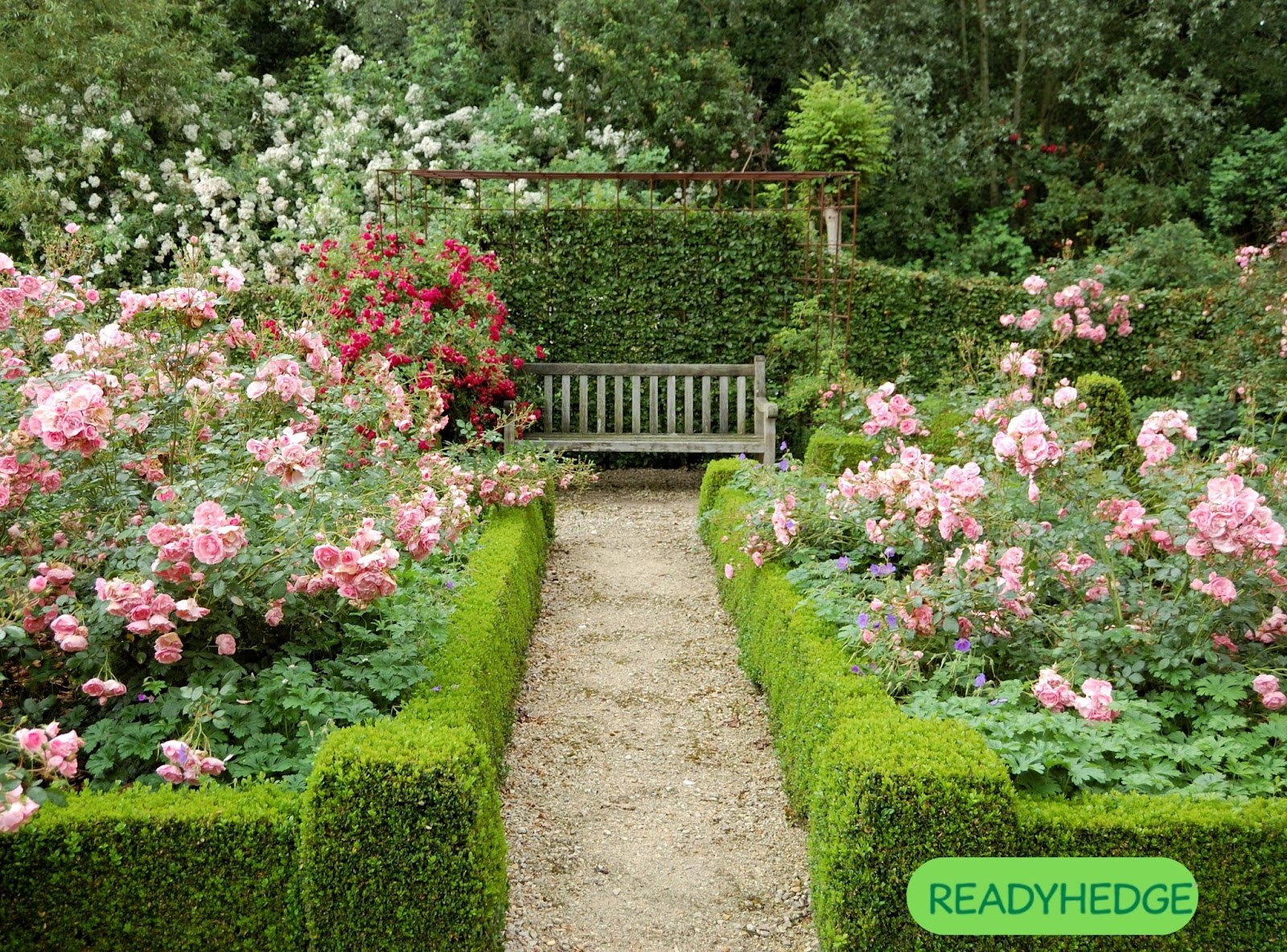
If you are looking to add some brightness and color to your garden, then flowering hedges are the way to go. There are lots of varieties of flowering shrubs that can be used for hedging. Some popular options include azaleas, hydrangeas, and rhododendrons. Azaleas come in many colors such as pink, white, or red and they produce beautiful blooms throughout springtime. Similarly, hydrangea bushes feature big clusters of colorful flowers from summer into fall while rhododendrons bring a bright pop of pink or purple in early springtime. Planting these flowering shrubs will attract butterflies and other beneficial pollinators to your garden!
3. Choose a Tough Plant Such as Pyracantha for Spiky Security and Protection from Wind
For an added layer of security and protection from the wind, consider planting a tough plant such as Pyracantha. This evergreen shrub grows quickly and is often used for hedging because it has spiky branches that can deter intruders. It also produces white flowers in springtime followed by bright orange berries in fall. Pyracantha can be kept dense with regular trimming or left to grow into its own wild shape- either way you are sure to get an attractive and unique hedge that will provide security for your outdoor space.
4. Plant Native Species That Can Thrive in Your Region’s Climate and Soil Type
If you want to be sure your garden hedge will thrive for years to come- choose native species. Native plants are adapted to the climate and soil type of your region, so they require minimal maintenance and are more likely to survive through tough weather conditions. Look up what types of hedges grow best in your area or speak with a local nursery expert for advice on the best option for you.
No matter what ideas you have for garden hedges, it is important that each plant gets adequate sunlight and water as well as proper pruning when necessary. With these tips in mind, you can easily create amazing looking garden hedges that will enhance the beauty of your outdoor space!
5. Heavenly Scents: Enhance Your Garden with Fragrant Hedges
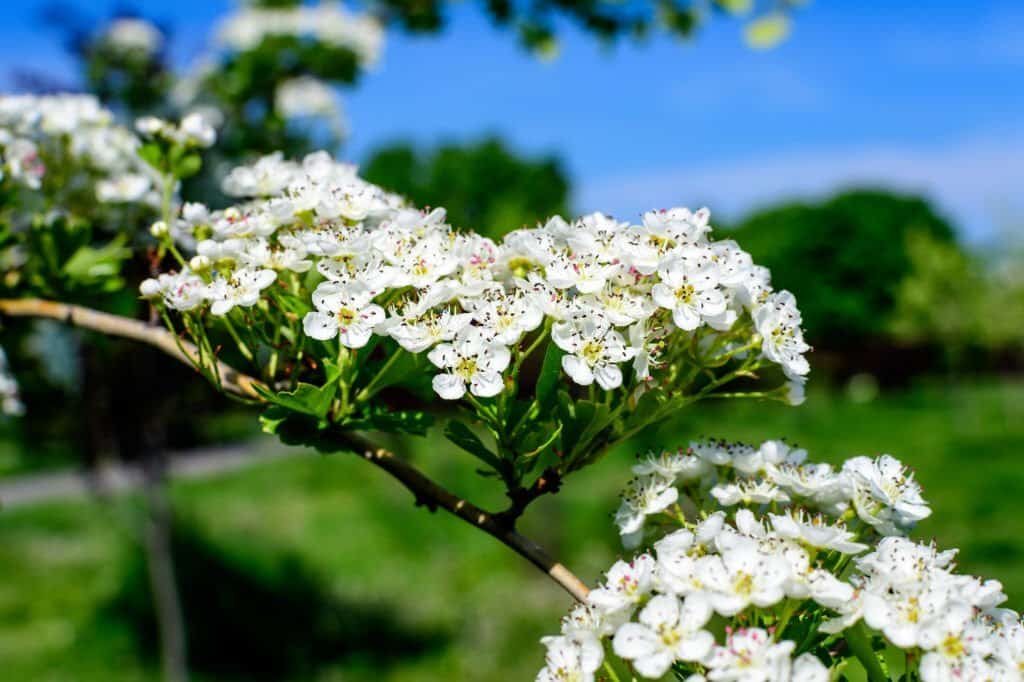
Create a fragrant garden hedge by incorporating aromatic plants such as lavender, rosemary, or jasmine. Not only will they provide a beautiful visual display, but they will also emit delightful scents, enhancing your garden experience.
6. Create Texture and Diversity with Mixed Hedges
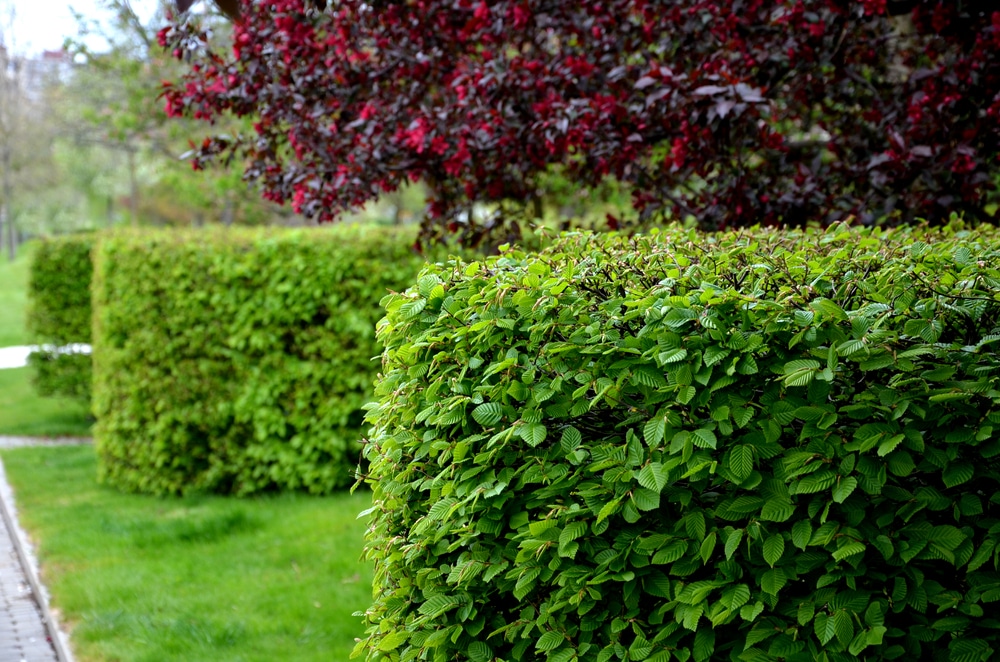
Opt for a mixed hedge that combines different types of plants, such as evergreen shrubs, flowering plants, and ornamental grasses. This diversity will add texture and visual interest to your garden while attracting a variety of beneficial insects and birds.
7. Unique Hedge Shapes for a Garden with Character
Experiment with different hedge shapes to add uniqueness and creativity to your garden. Instead of the traditional straight-line hedge, consider creating curved or wavy designs. You can even explore topiary techniques to sculpt your hedges into intricate shapes like animals or geometric patterns.
8. Edible Delights: Fruit-Bearing Hedges for a Bountiful Garden
Incorporate edible hedges into your garden, such as fruit-bearing shrubs like blueberries or raspberries. Not only will these hedges provide privacy and beauty, but they will also yield delicious, homegrown produce for you to enjoy.
9. Privacy and Style with Hedge Fences
Install a hedge fence, which combines the functionality of a traditional hedge with the structure of a fence. Using taller shrubs or trees, this type of hedge can provide both privacy and security while maintaining a natural and aesthetically pleasing appearance.
10. Discover the Joy of Sensory Hedges in Your Garden

Create a sensory hedge by selecting plants that engage multiple senses. For example, include plants with different textures like fuzzy leaves or rough bark, plants with interesting colors, and those that make pleasant sounds when the wind rustles through them, such as ornamental grasses.
Consider using evergreen climbers or vining plants, such as ivy or clematis, to cover walls or fences and create a living hedge. These climbers will not only add greenery and privacy but also introduce vertical interest and a touch of elegance to your garden.
12. Define Borders and Pathways with Compact Hedges
Incorporate low-growing or dwarf hedges to define borders or pathways within your garden. These compact hedges can guide visitors through your outdoor space while adding structure and organization to the overall design.
13. Integrating Hedges with Water Features and Seating Areas
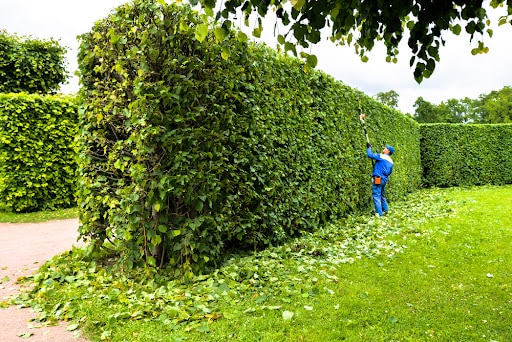
Combine your hedge with other garden elements, such as a water feature or seating area, to create a harmonious and inviting atmosphere. By integrating your hedge with other focal points, you can establish a cohesive and visually appealing garden design.
14. Consider an Artificial Option for Minimal Maintenance and All-weather Protection
If you are looking for an even easier solution to garden hedges, then consider artificial options. Artificial plants and hedges can provide a great look at minimal maintenance. Plus they are all-weather resistant so you don’t have to worry about them wilting or dying in extreme temperatures. Whether you choose a real or artificial hedge, your outdoor space will be looking great in no time!
15. Add Some Structural Definition to Your Yard by Utilizing Garden Trellises
Garden trellises are a great way to give your outdoor space some structure and definition. You can use them to create living walls or even build a canopy over an outdoor seating area. With the right plants, garden trellises can also be used as hedges- adding texture and color to your yard while providing more privacy than traditional fencing. Ivy is one of the best options for this type of hedge because it grows quickly and can be trained into nearly any shape you desire!
Final Thought
No matter what ideas you have for garden hedges, there is a solution that will fit your needs and spruce up your yard. From evergreen foundation plantings to flowering shrubs, artificial options or trellises- there are plenty of creative solutions to choose from! Be sure to consider the climate and soil type in your region when selecting plants so they can thrive long-term. With some careful planning and research, you can create an amazing looking garden hedge that will make all of your neighbors jealous!
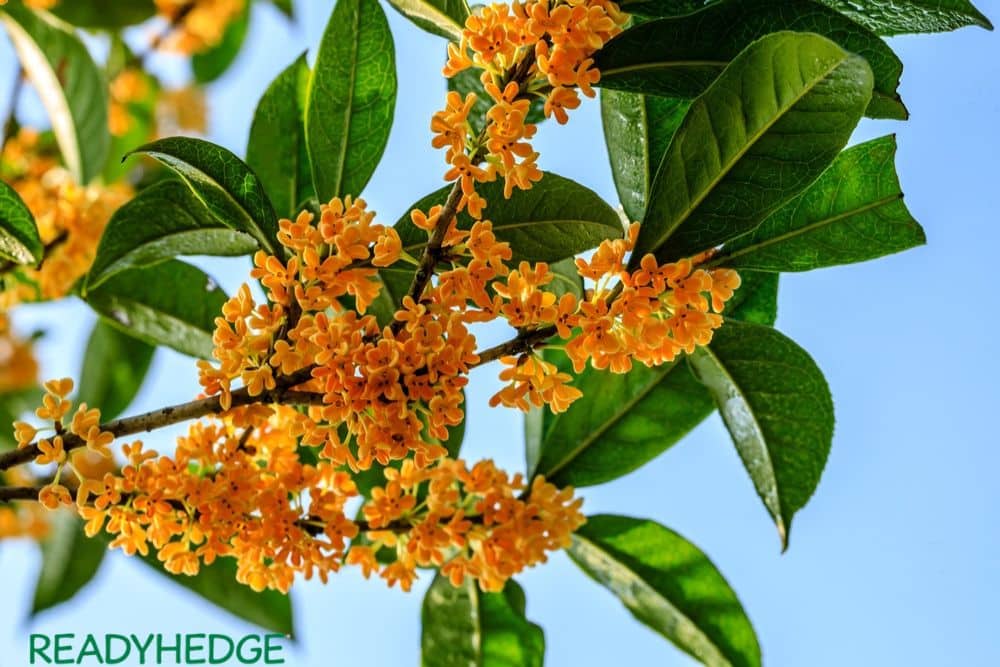
by Matthew Kemble | Jun 13, 2023 | News
Welcome to the captivating world of Osmanthus, a flowering plant renowned for its exquisite fragrance and timeless beauty. In this article, we will delve deeper into the realm of Osmanthus, providing you with detailed insights on its blooming season, appearance, optimal growing conditions, landscaping potential, cultural significance, and maintenance tips. Prepare to be enchanted by the allure of Osmanthus, as we explore its every facet.
Meet the Osmanthus
Osmanthus, scientifically known as Osmanthus fragrans, is a versatile evergreen shrub or small tree belonging to the Oleaceae family. Originating from East Asia, this elegant plant encompasses various species, including Osmanthus fragrans, Osmanthus heterophyllus, and Osmanthus delavayi, each possessing unique characteristics and charm.
The Blooming Season: When Does Osmanthus Bloom
The blooming season of Osmanthus is a much-awaited spectacle for garden enthusiasts. Depending on the specific species and prevailing climate conditions, Osmanthus generally bursts into bloom during late autumn or early winter. This timing adds a touch of enchantment to colder months, infusing gardens and landscapes with its delightful fragrance and ethereal beauty.
A Closer Look at Osmanthus Blooms
The blossoms of Osmanthus possess an innate charm that captivates the observer. Delicate and small, these flowers come in various shades, ranging from creamy white to vibrant yellow, with a few species even displaying hints of orange. Each blossom consists of four petals, intricately arranged in clusters or racemes, further enhancing their visual appeal and creating an awe-inspiring display.
An Aroma Like No Other
The captivating fragrance emitted by Osmanthus flowers is nothing short of magical. Described as a delightful blend of fruity, floral, and apricot-like notes, its scent pervades the air, offering an invigorating and uplifting experience. This extraordinary aroma has earned Osmanthus its well-deserved nickname, “Sweet Olive,” adding to its allure and desirability.
Optimal Conditions for Growth
Osmanthus is generally a hardy plant that thrives in moderate climates. It prefers a location with full to partial sunlight and well-drained soil. While it can adapt to a wide range of soil types, Osmanthus appreciates slightly acidic to neutral pH levels. Adequate watering and occasional fertilization contribute to the plant’s overall health, promoting vigorous growth and abundant blooms.
Landscaping with Osmanthus
The versatility of Osmanthus makes it an excellent choice for various landscaping purposes. Its elegant appearance, coupled with its intoxicating fragrance, makes it a popular selection as a standalone specimen, privacy hedge, or even as an espalier against a wall. Additionally, the compact growth habit and glossy foliage of Osmanthus lend themselves well to topiary and bonsai creations, adding artistic flair to any garden or outdoor space.
The Cultural Significance
Osmanthus holds profound cultural significance in different regions. In Chinese culture, it symbolizes love, romance, and fidelity, often used in traditional wedding ceremonies and moon festivals. Similarly, in Japan, Osmanthus is considered a harbinger of prosperity, happiness, and luck, making it an integral part of celebrations and auspicious events.
Pruning and Maintenance
To maintain a healthy and well-shaped Osmanthus plant, regular pruning is essential. After the blooming season, prune to remove any dead or damaged branches, promoting new growth and ensuring a more robust blooming period in the following year. This practice also allows you to shape the plant according to your preferences, enhancing its aesthetic appeal.
Final Thought
Prepare to immerse yourself in the enchanting realm of Osmanthus, where fragrance meets beauty. From its delicate blossoms to its intoxicating aroma, Osmanthus offers a sensory experience that captivates all who encounter it. By understanding its blooming season, appearance, optimal growing conditions, landscaping potential, cultural significance, and maintenance requirements, you can embrace Osmanthus as a cherished addition to your garden. So, embark on this fragrant journey and let the allure of Osmanthus infuse your surroundings with its timeless charm.
Frequently Asked Questions (FAQ)
Can Osmanthus be grown in different climates?
Osmanthus is adaptable to a wide range of climates, but it generally thrives in moderate climatic conditions. It can tolerate both hot summers and mild winters, making it suitable for various regions.
Does Osmanthus require special care or maintenance?
Osmanthus is a relatively low-maintenance plant. It appreciates well-drained soil, adequate watering, and occasional fertilization. Regular pruning after the blooming season helps maintain its shape and promotes healthier growth.
How long does the blooming period of Osmanthus last?
The blooming period varies depending on the species and local climate. Generally, Osmanthus blooms persist for several weeks, allowing ample time to relish their captivating beauty and fragrance.
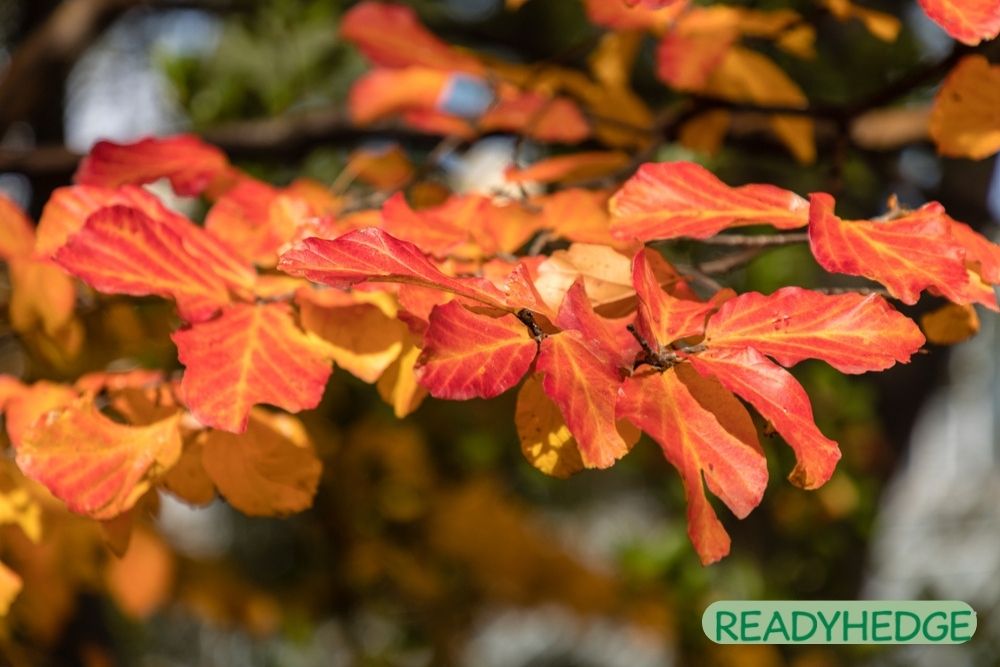
by Matthew Kemble | Jun 12, 2023 | News
Are you looking for a unique and exotic tree to add to your garden? Look no further than the rare Parrotia persica Vanessa, a magnificent species boasting beautiful bark and foliage. Have you ever heard of the majestic Parrotia Persica Vanessa? If you haven’t, now is your chance to learn more about this rare and exquisite species! In this blog post, we will explore the characteristics and history of this amazing Parrotia persica Vanessa tree.
Unveiling the Beauty
With a closer look at the Parrotia persica Vanessa, it’s impossible to miss its stunning display of colors. In early spring, as the tree emerges from its dormant phase, a breathtaking transformation takes place. Its branches become adorned with delicate crimson and scarlet flowers, offering a vibrant spectacle that is truly awe-inspiring. As the seasons progress, the foliage evolves, showcasing a splendid array of rich green hues in summer, transitioning into a glorious mix of fiery red, yellow, and orange during autumn.
Origin and History
The Parrotia persica Vanessa, commonly known as Persian Ironwood or Vanessa Tree, originates from the forests of Iran, Northern Turkey, and the Caucasus region. Named after the German naturalist Friedrich Parrot, this tree species has a storied history that dates back centuries. Revered for its ornamental value and exceptional resilience, it has become a cherished addition to botanical collections and urban landscapes around the world.
Iconic Features
Till now, you must have fallen in love with this parrotia persica vanessa and now it’s time to know more in depth about it. So, get ready to discover more about this wonder piece of plant.
Distinctive Bark
One of the most striking attributes of the Parrotia persica Vanessa is its bark. Revealing a tapestry of colors, ranging from creamy white and gray to mottled patches of brown, it adds texture and intrigue to its aesthetic appeal. The peeling bark of mature specimens reveals layers of contrasting hues, creating a visual spectacle that truly sets this tree apart.
Mesmerizing Leaves
The foliage of the Parrotia persica Vanessa is equally captivating. Its elliptical-shaped leaves feature serrated edges, contributing to its unique charm. During spring and summer, the leaves provide a lush and dense canopy, casting a cooling shade. As autumn approaches, they transform into a mesmerizing palette of warm tones, evoking a sense of enchantment.
Growing Conditions
There are some conditions on which the growth of this plant depends and as an expert I suggest you understand about them if you want to have this plant in your home.
Climate
The Parrotia persica Vanessa thrives in temperate climates, particularly those with distinct seasons. It adapts well to a variety of zones, ranging from USDA hardiness zones 5 to 8, making it suitable for a wide range of regions.
Sunlight and Soil
Vanessa prefers full sun to partial shade, as it helps enhance its vibrant foliage and flower colors. It can tolerate various soil types but thrives in well-drained soil that retains moisture.
Landscaping and Maintenance
The Parrotia persica Vanessa is a versatile tree that can be a focal point in both residential and public landscapes. Its compact size and rounded canopy make it an excellent choice for urban gardens, parks, and even large containers. Pruning is generally minimal, with occasional removal of dead or crossing branches to maintain its health and shape.
Conservation Efforts
Due to its rarity, the Parrotia persica Vanessa is classified as a threatened species in its native habitat. To preserve its genetic diversity and protect it from extinction, various organizations and botanical institutions work diligently to cultivate and propagate this remarkable tree.
Conclusion
In the realm of botanical wonders, the Parrotia persica Vanessa stands as a true masterpiece. From its origins in Iran and Turkey to its introduction in landscapes worldwide, this rare tree species showcases nature’s artistry at its finest. Its adaptability to diverse climates and its versatility in landscaping make it a prized addition to gardens, parks, and urban spaces. As we appreciate the beauty of the Parrotia persica Vanessa, let us also recognize the importance of conservation efforts to ensure the preservation of this remarkable species for future generations. Embrace the allure of the Parrotia persica Vanessa and witness firsthand the extraordinary beauty that nature has to offer.
FAQ
Can I grow the Parrotia persica Vanessa in a small urban gard?
Yes, the Parrotia persica Vanessa is well-suited for small urban gardens due to its compact size and rounded canopy. It can serve as a focal point, adding beauty and interest to limited spaces.
How do I care it in terms of watering and fertilization?
The Parrotia persica Vanessa generally requires moderate watering, particularly during dry periods. It is important to ensure the soil is well-drained but retains moisture. As for fertilization, applying a balanced slow-release fertilizer in early spring can help promote healthy growth.
Can I plant the Parrotia persica Vanessa in a container on my patio?
Yes, the Parrotia persica Vanessa can be grown successfully in containers on patios or balconies. Just ensure the container is large enough to accommodate its root system and use a well-draining potting mix.
Is the Parrotia persica Vanessa suitable for regions with mild winters?
Yes, the Parrotia persica Vanessa is adaptable to regions with mild winters. It can tolerate a range of temperatures but prefers temperate climates with distinct seasons.
Can I propagate the Parrotia persica Vanessa from seeds or cuttings?
Propagating the Parrotia persica Vanessa from seeds can be challenging due to its complex germination requirements. However, it is possible to propagate the tree through hardwood cuttings taken in late winter or early spring.
Does the Parrotia persica Vanessa require any special pruning techniques?
The Parrotia persica Vanessa generally requires minimal pruning. However, it is advisable to remove any dead or crossing branches as needed to maintain its health and aesthetic shape. Pruning should ideally be done during late winter or early spring.
Does the Parrotia persica Vanessa have any disease or pest concerns?
The Parrotia persica Vanessa is relatively resistant to diseases and pests. However, occasional issues with aphids or scale insects may arise. Regular monitoring and appropriate pest management practices can help address these challenges effectively.



















